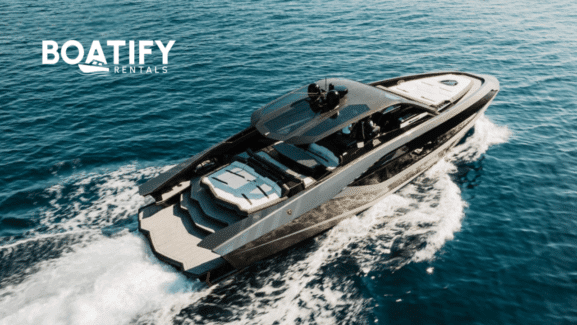How to Drive a Boat: A Beginner’s Guide to Safe and Confident Boating
Boating is an exhilarating way to explore the water, but if you’re new to it, learning how to drive a boat can seem daunting. This guide will walk you through the basics of how to drive a boat, from starting the engine to safely docking. Whether you’re planning to rent a boat for a day or considering buying your own, understanding these fundamentals will help you feel confident on the water.
Disclaimer: The information provided in this guide is for general informational purposes only. It does not constitute legal, safety, or professional advice. Always consult with a certified boating instructor or professional before operating a boat. Compliance with local laws and regulations is the responsibility of the boat operator.
1. Understand the Basics of Boat Operation
Before you get behind the wheel, it’s essential to understand the basic components of a boat and how they function. Here are the key parts you should familiarize yourself with when learning how to drive a boat:
- Steering Wheel: Controls the direction of the boat.
- Throttle: This lever controls the speed of the boat. Push forward to accelerate and pull back to slow down.
- Gear Shift: Used to engage forward or reverse. Neutral is used when starting the engine.
- Trim Control: Adjusts the angle of the boat in the water, helping to smooth out the ride.
2. Start the Engine and Perform a Pre-Departure Check
Before you start the engine, ensure that everyone on board is wearing a life jacket and that all safety equipment is in place. Here’s a quick checklist for safe boating:
- Check Fuel Levels: Ensure you have enough fuel for the trip.
- Inspect the Engine: Look for any signs of damage or leaks.
- Check the Weather: Make sure conditions are safe for boating.
- Secure Loose Items: Stow away any loose items to prevent them from moving around.
Once these checks are complete, you can start the engine. Most boats start similarly to cars, with either a key or a push-button start. Let the engine idle for a minute to warm up before heading out.
Pro Tip: For more on boating safety, visit the U.S. Coast Guard’s Boating Safety Resource Center.
3. How to Steer and Navigate a Boat
Steering a boat requires a gentle touch. Unlike cars, boats don’t have brakes, so you’ll rely on reducing throttle and reversing the engine to slow down or stop. Here’s how to steer effectively when you’re learning how to drive a boat:
- Gentle Turns: Use smooth, gradual movements on the steering wheel to turn the boat. Sharp turns at high speeds can cause the boat to lean or capsize.
- Throttle Control: Adjust the throttle slowly when increasing or decreasing speed to maintain control.
- Watch for Obstacles: Keep an eye out for buoys, other boats, and shallow areas. Always follow navigational markers.
4. Practice Safe Boating Maneuvers
Learning how to maneuver your boat safely is crucial, especially in tight spaces like marinas or docks. Here are some maneuvers to practice when learning how to drive a boat:
- Docking: Approach the dock slowly, with the bow (front) of the boat slightly angled toward it. Use the gear shift to alternate between forward and reverse to gently nudge the boat into position.
- Anchoring: When anchoring, ensure you’re in a location where the boat won’t drift into obstacles. Lower the anchor slowly and let the boat drift back slightly before securing it.
- Turning in Reverse: Boats turn differently in reverse. Practice turning in both directions to get a feel for how the boat responds.
5. Understanding Boating Laws and Etiquette
Each region has its own boating laws and regulations, which you should familiarize yourself with before heading out. Key points to consider include:
- Speed Limits: Many areas have speed limits for boats, especially in no-wake zones.
- Right of Way: Understand the rules for who has the right of way in various situations, such as when crossing paths with other boats.
- Environmental Regulations: Be aware of any protected areas where boating may be restricted.
For more detailed information on boating laws in your area, check out Boat-Ed’s guide to boating laws by state.
6. Docking and Securing Your Boat
Docking can be one of the more challenging aspects of learning how to drive a boat, especially in windy conditions or strong currents. Here’s how to do it safely:
- Approach Slowly: As you near the dock, reduce your speed to the lowest possible throttle setting.
- Use Fenders: Place fenders along the side of the boat to prevent damage when docking.
- Secure the Boat: Once docked, use dock lines to secure the boat. Tie the bow, stern, and spring lines to keep the boat in place.
Conclusion
Driving a boat can be an incredibly rewarding experience, but it requires practice and patience. By understanding the basics of how to drive a boat, practicing safe maneuvers, and adhering to local boating laws, you’ll be well on your way to becoming a confident boater. Whether you’re renting for the day or planning longer trips, these tips will help ensure you have a safe and enjoyable time on the water.
Interested in learning more about boating? Check out our blog on the cost of buying and owning a boat to explore whether renting or owning is the best option for you.


